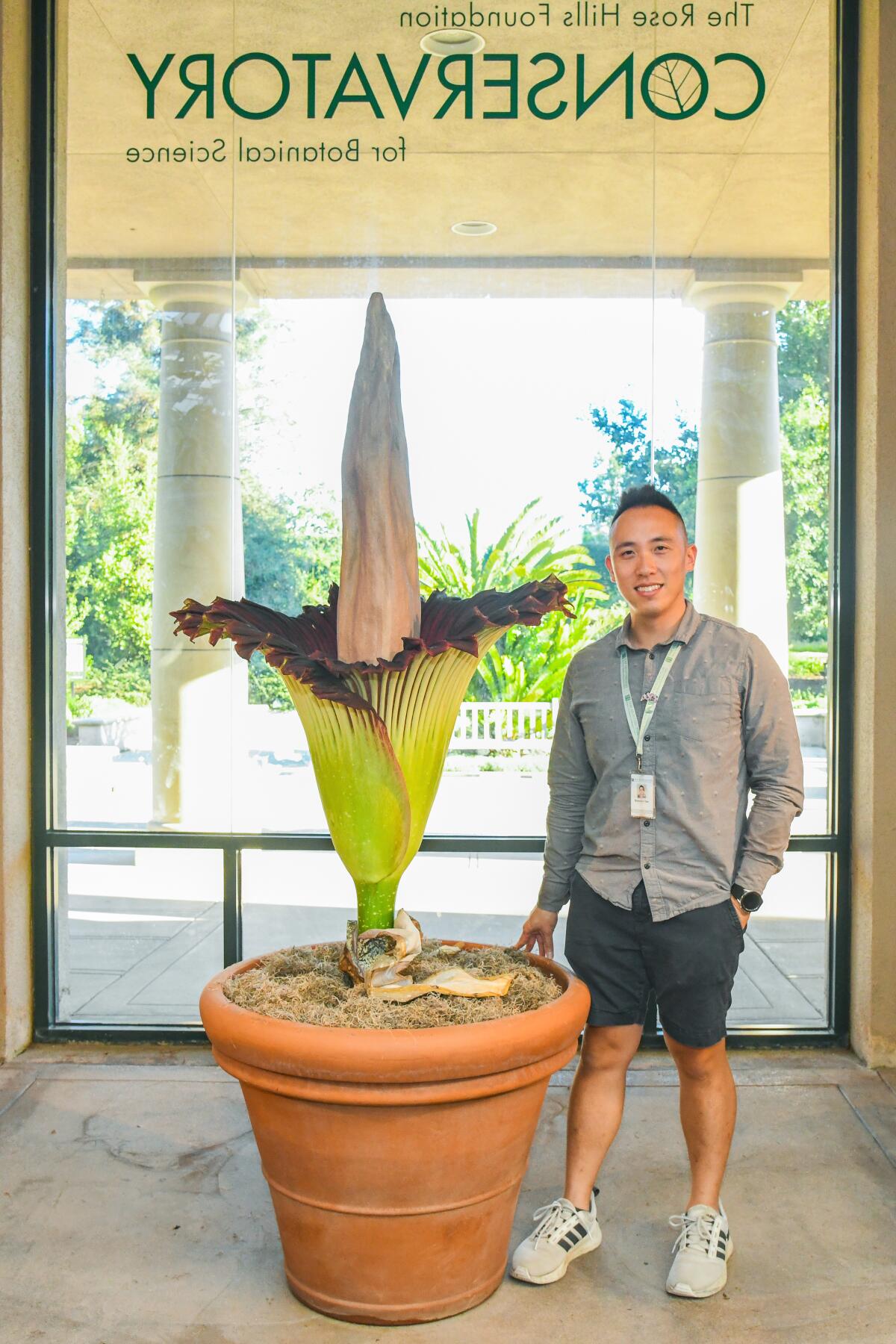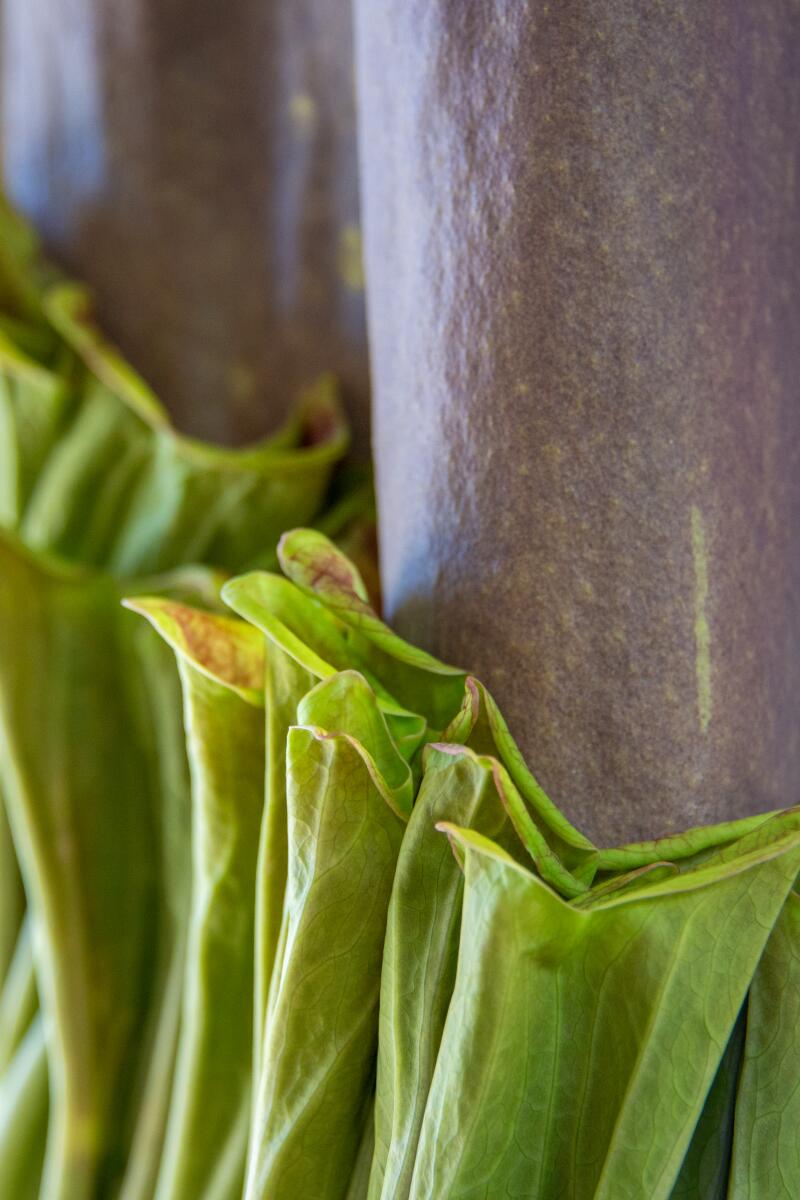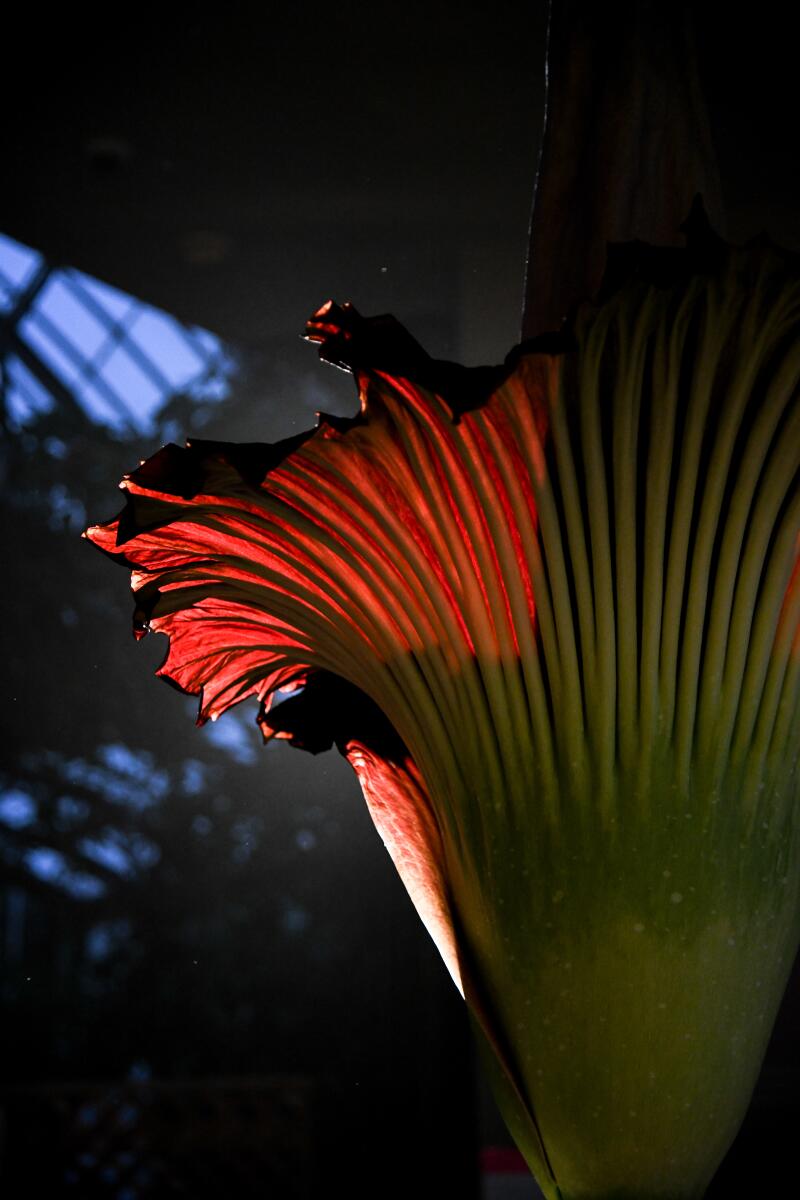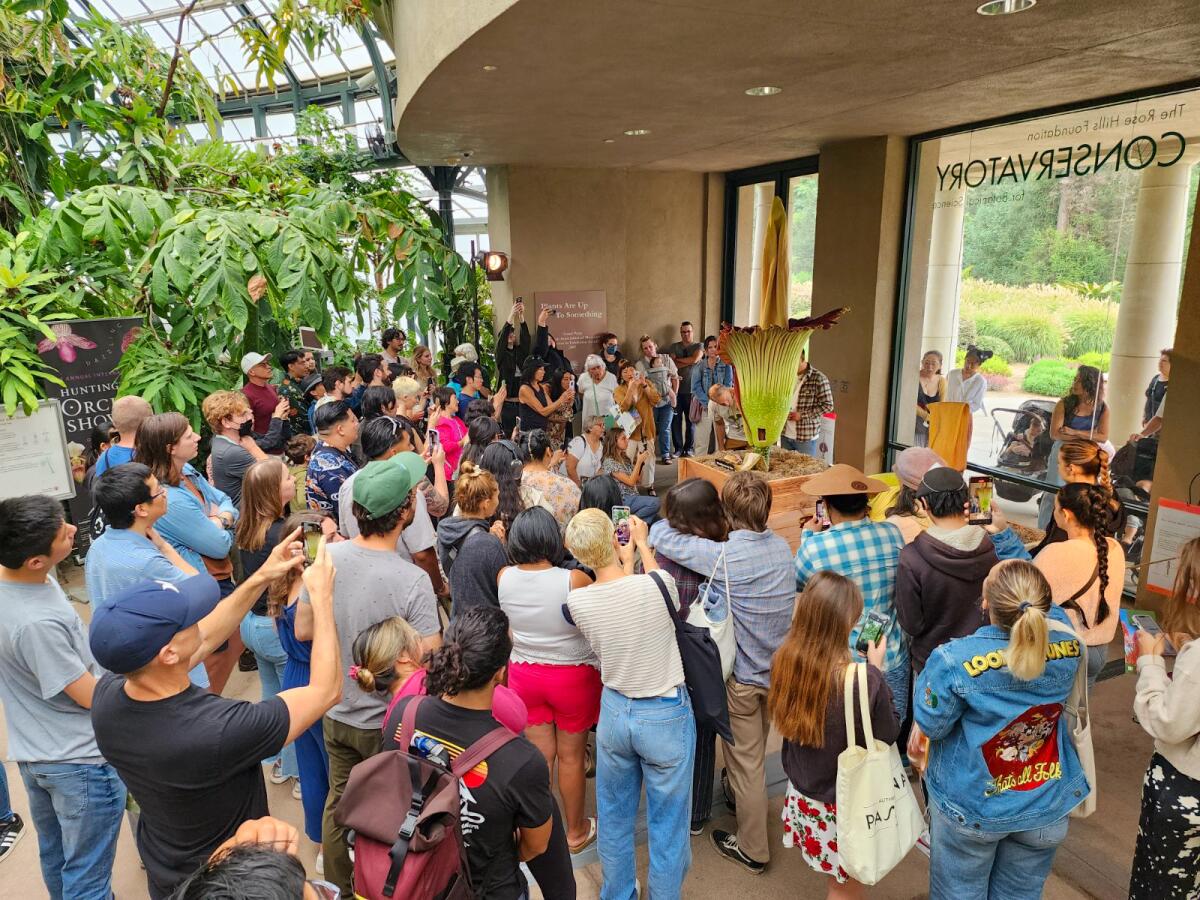[ad_1]
It’s sweaty stinky time again at the Huntington Library, Art Gallery, and Botanical Gardens. One of its rare corpse flowers is about to bloom, in all its putrescence. In the next 10 to 12 days, expect visitors to be lined up to enter the Huntington’s sauna-like viewing area in San Marino to give this giant, fantastically weird tropical plant a sniff.
Corpse flowers (Amorphophallus titanum) are native to the rain forests of Sumatra in Indonesia, so they like it hot and steamy. They also bloom once every four to six years in the wild for only 24 hours before they start closing again, so viewing windows are short and rare.
If you miss seeing this one in person, you’re in luck. The Huntington has 43 corpse flowers in its collection, which spend most of their time in a greenhouse removed from public view. Over time, the staff has developed ways to coax the plants into blooming every two to three years, said Brandon Tam, associate curator of the Huntington’s orchid (and corpse flower) collection. With so many plants, there are usually a few primed to bloom every year.
In 2023, for instance, the Huntington had four plants bloom between July and October, Tam said. And one of last year’s bloomers, named Stankosaurus Rex for its massive 8-foot height, is now fruiting, so it looks like a tall upright club covered with plump crimson orbs.
The Huntington has had many corpse flowers fruit since its first display in 1999, and it’s used the seeds from those fruits to grow new plants for its collection and for other botanic gardens that want their own corpse flowers. But this is the first time the Huntington has been able to show off a blooming plant next to one that is fruiting, Tam said.

Curator Brandon Tam stands next to a blooming corpse flower in 2023 that was named Allan after Ken’s best friend from last year’s wildly popular “Barbie” movie.
(The Huntington Library, Art Museum, and Botanical Gardens)
The flower’s fruit is the favored food of the rhinocerus hornbill but is toxic to humans, Tam said, so don’t try to sample it. Also, the flower gets pollinated by the insects attracted to its rotten smell, “typically sweat bees, flesh flies and carrion beetles who enjoy the pungent odor,” he said.
The pollinators are usually insects looking for the decaying carcasses of animals to lay eggs on, Tam said, “which is why they’re looking for stinky things. The flower is trying to mimic that odor of a dead carcass, and its entire base is a dark maroon red to mimic bloody carcasses of dead animals. Plants are just so fascinating, especially this one.”
As for the flower’s stench, uh, “fragrance,” some people equate it to rotting meat or stinky gym socks, but it seems to change depending on the sniffer, said Keisha Raines, the Huntington’s communications associate. “To me, it smells like a really bad trash can with heavy cabbage smells,” she said. “I used to work at a vegetarian restaurant in high school, and that flower smells like the trash there the day before it was collected.”
Tam believes the flower will bloom in the next 10 to 12 days. It’s hard to precisely predict when, he said, because its bloom is affected by the weather. “The hotter it is, the faster it blooms.” (If you want to see one bloom now, the Huntington’s website features a time lapse of the 2022 bloom.)

A closeup detail of a closed corpse flower before it blooms. (The Huntington Library, Art Museum, and Botanical Gardens)

The deep maroon skirt of a blooming corpse flower mimics the color of rotting flesh, part of its ploy, along with its putrid “fragrance,” to attract carrion-loving pollinators. (Linnea Stephan / The Huntington Library, Art Museum, and Botanical Gardens)

Corpse flowers bloom for just 24 hours, so their blooms always attract a crowd like this one at the Huntington in 2023.
(The Huntington Library, Art Museum, and Botanical Gardens)
Typically, corpse plants bloom at night, but the Huntington’s social media team will send out updates and alerts as the time gets nearer, Tam said. You can also watch the flower’s progress on a live webcam and daily growth chart. When the bloom looks imminent, go online to get your ticket and arrive as early as you can in the morning.
The Huntington is open from 10 a.m. to 5 p.m. Wednesday through Monday and closed on Tuesday. (Tam said he feels fairly certain this flower won’t bloom on a Tuesday.)
If that suspense is not enough, the Huntington is also asking the public to help name this year’s first blooming corpse plant. One of last year’s plants was dubbed “Allan the Amorphophallus,” in honor of Allan from the popular “Barbie” movie, said Raines. (Allan is Ken’s awkward best friend, which seemed fitting for a lovable stinky plant, “and we were in a very Barbie state of mind last year,” she said.)
People should post name ideas on the Huntington’s Instagram page, watch their social media and bring a fan for visiting the corpse flower in person. That’s because it gets steamy and hot inside the conservatory, Tam said, to the point that people actually walk outside for a little relief. With highs around the Huntington forecast to cool to the high 80s from the mid-90s next week, that could be a blessing for visitors.
[ad_2]
Source link